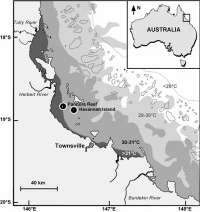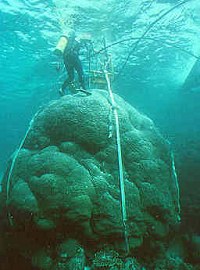Amino acids in corals
Description
The skeletons of massive corals are a valuable source of information about past tropical climate, in particular as they appear to act as a bell-weather for global warming.

In 1998, an estimated 16% of the world's tropical coral were killed in the most destructive and global bleaching event documented. At the same time, tropical sea surface temperatures were the highest in the modern instrumental record. Anomalously warm sea surface temperatures again caused widespread bleaching during 2002.
We examined corals from the Great Barrier Reef (Australia) and Indonesia and fossil corals from Greece.
Details
Project members
- Kirsty Penkman
- Matthew Collins
- Erica Hendy
- Sandy Tudhope
Project dates
- 2005-2006
Funding bodies
- NERC
- NSF
Objectives
- to determine if the age dependent increase in D/L values can be used to rapidly and cheaply used to date corals, in particular at offshore sites in which the fluorescence is much weaker; and
- to establish if bleaching events are consistently recorded as disturbances in an otherwise predictable increase in D/L values with coral age.
- to compare amino acid composition and concentration between fluorescent and non-fluorescent bands
Results
Report of Erica's work in Australia:

Related links
- Abrupt Decrease in Tropical Pacific Sea Surface Salinity at End of Little Ice Age (Report of Erica's work in Australia)
